These photos were sent in by Eyal Bedrik of Entry Systems Ltd., after his recent trip to the US from Israel. The photos were taken at the George Eastman House in Rochester, New York. The home was built between 1902 and 1905, and is 35,000 square feet with 50 rooms!
There is sometimes confusion between a swing clear hinge and a wide throw hinge. A swing clear hinge swings the door out of the opening when it is at 90 degrees (you can see some examples here). The purpose of a swing clear hinge is to a) increase the clear opening width, or b) get the door out of the opening to avoid damage from carts, etc.
The hinges in these photos are wide throw hinges. They are used when more clearance is required behind the door when it is opened to 180 degrees. When I received the first 3 photos from Eyal, I asked if he had a photo illustrating the reason wide throw hinges were needed, and he sent the 4th photo to show “the rest of the story.” The decorative columns project far enough that additional clearance is needed. If wide throw hinges were not used, the doors would not open to 180 degrees. Keep in mind that wide throw hinges will reduce the clear opening width which is measured with the door at 90 degrees.
Thanks for the photos, Eyal! It was great to have lunch with you, Danny, and Jordan!
You need to login or register to bookmark/favorite this content.

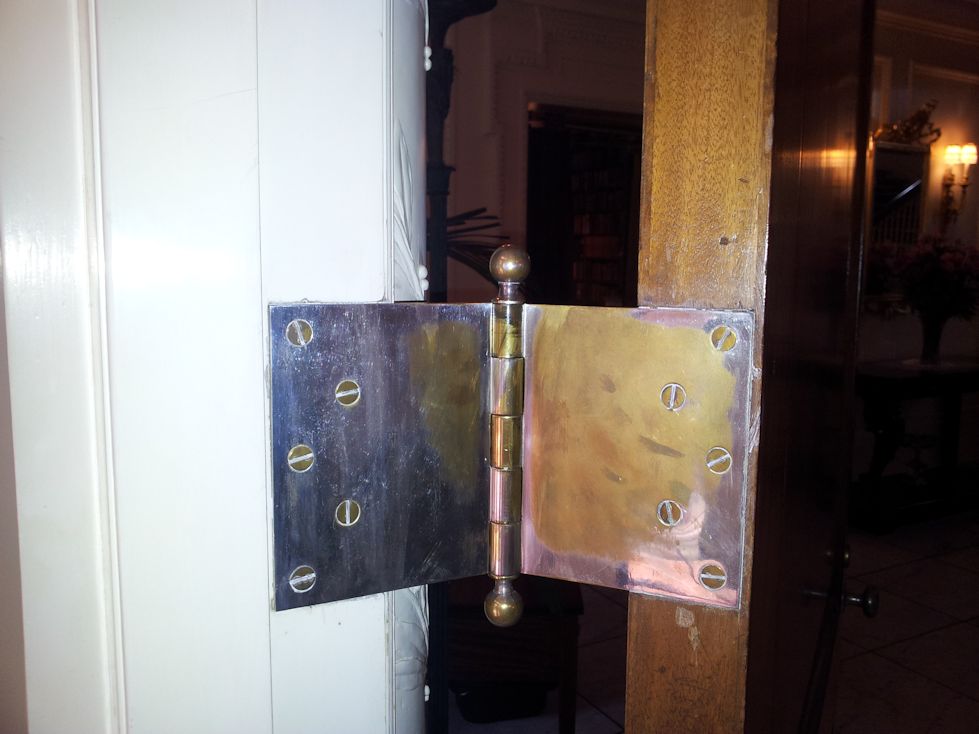
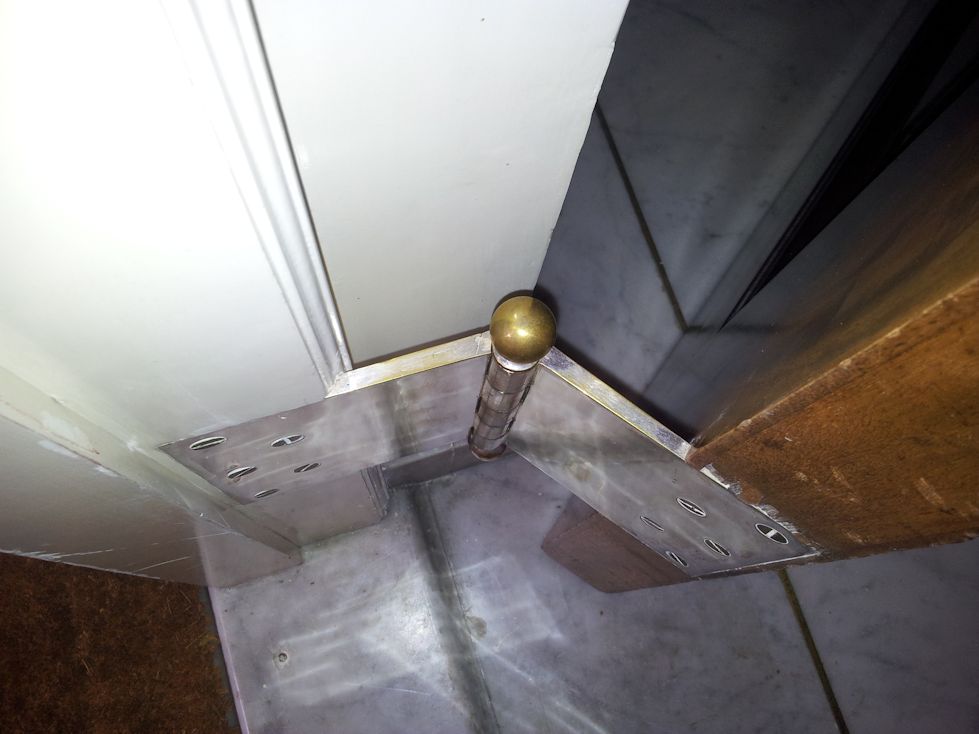

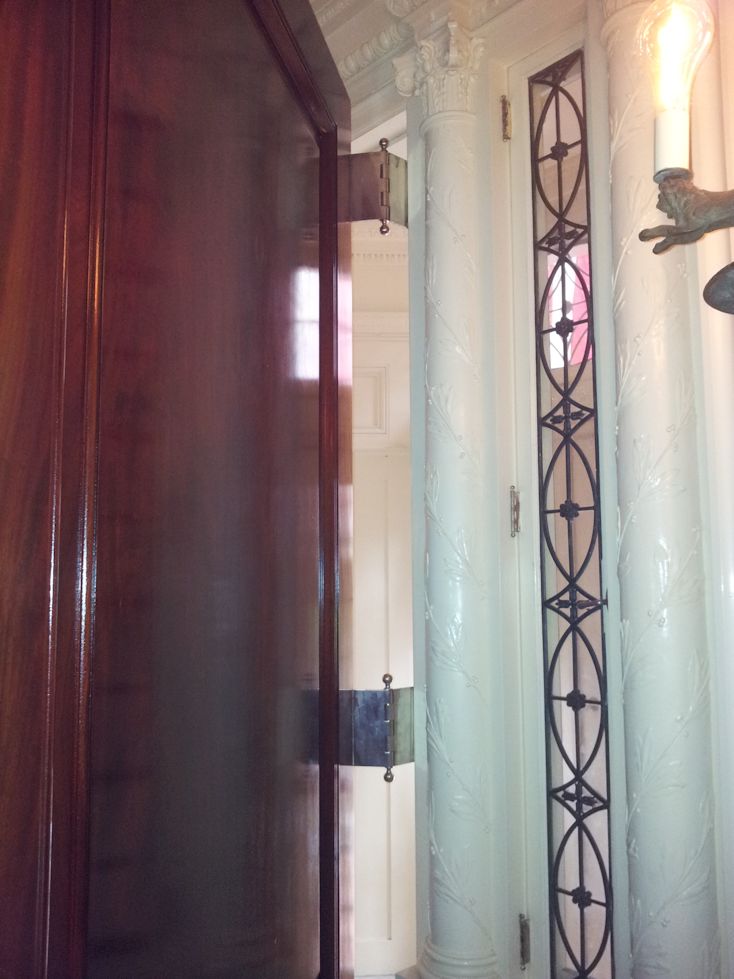

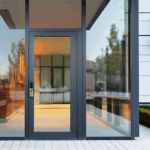

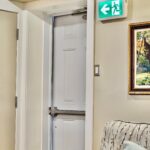
They did not need to be that wide, looks like someone misunderstood the calculation.
And not much use on fire doors where you need to maintain a 1/8 inch gap for smoke seals and intumescents to work. Because of the swing on an extended-hinge door, it won’t even open if the door is thick and the gaps are small.
Wider hinges also help when using shim material to adjust the relative position of the door within the frame opening. The method is commonly referred to as “packing hinges”. Anyone who has ever tried to “pack” a 4″ wide butt hinge (worse yet a continuous hinge) knows it is much less effective than packing a 4 1/2″ wide butt hinge. This is due to the resulting geometry(location of the hinge pivot point)after adding shim material to either side of a hinge leaf (stop side vs bearing side).
I live in a suburb of Rochester, the Eastman house is one of the Crown Jewels of our town…not only is the house stunning, the gardens are beautiful, lots of wedding couples stop there for formal photos.
I think those hinges may be wide not just to protect the columns, but also to clear the wall sconce that you can see in the upper right corner, it looks like that juts out even further than the columns.
Remember when doing historical type work always use straight slot screws
Good point!
After a closer look, they were probably gaining clearance for the detail work at the top of the pilaster as it is the closest obstruction to the pivot point.
The installer, (or renovator), did not seem to adhere to the convention of putting the three knuckle leaf on the jamb and the two knuckle leaf on the door. I wonder, why?
Hi Mark –
I didn’t actually know that was a standard convention. Do you have any documentation?
– Lori
That is the convention according to Accurate Lock and Hardware, and according to most builders. If not, the finials rotate with the door, as opposed to being part of the jamb. Most installers will follow that convention, as was taught to me fifty years ago. Left hand hinges are different than right hand hinges, much like a door. (The pin always goes in the top.)
Where can I get 4” x 12” wide throw hinges?